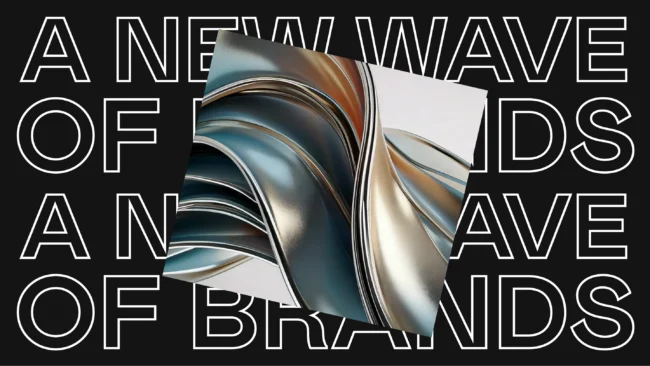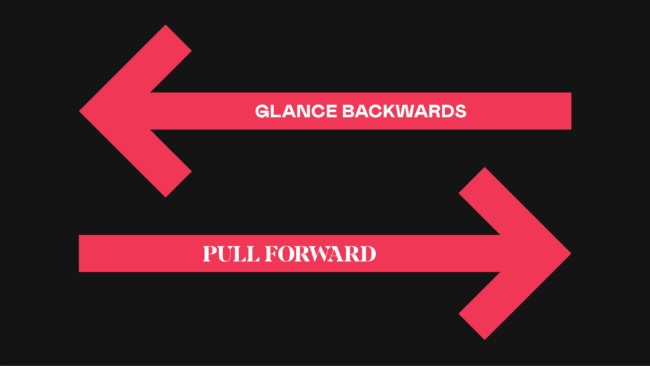
Our Executive Creative Director looks at the Finance industry and what brands in this area need to move towards in order to capture the next generation.
The finance sector has been changing for decades – bank managers are no longer the pillar of the community and high street branches continue to close, but we’re still looking for the same thing our grandparents wanted, a trusted figure to help us negotiate financial matters. And now the choice is broader than ever. There are long-standing institutions like Lloyds Bank, JPMorgan, Chase, Royal Bank of Scotland and Goldman Sachs. But there are also disrupter fintech brands joining the fray including: Klarna, Laybuy, Monzo, Coinbase, SoFi, Robinhood, Empower, Etoro, Branch, Chime, Betterment, Ellevest, Wealthfront, Soldo, Mint and Venmo. It’s not surprising the heritage banks are launching their own disrupter brands such as Goldman Sachs partnering with Apple to launch a credit card rewarding customers with cashback.
The tech brands are also muscling in. Google has Google Pay, Amazon has acquired FitBit – and therefore FitBit Pay – and Facebook has launched Facebook Pay, making it easy to buy on platforms like WhatsApp or Instagram.
A recent report by mobile bank, Pepper, found that 44% of people ‘chose to interact with their bank online because it was more efficient’. While not necessarily new information, it clarifies why fintech brands are building their technology from the ground up, creating customer-first, frictionless user experiences, making simple design systems and inventing short, memorable names.
We are blasé about ultra-speedy, digital experiences and we expect the same from our financial brands. We want beautifully designed, intuitive interfaces that save time and we are looking for smart ideas like bill splitting, integration and secure ID.
Today’s millennial and Gen Z consumers do not only care about getting the lowest APR on a mortgage, or optimum returns on their stocks and shares ISA – they want institutions to help them with money management. Monzo and Starling’s success is because individuals can manage their money easily, create personalized financial goals, and they help customers achieve those goals in manageable steps.
In building more meaningful relationships, the market has moved even further to offering services that speak to individuals’ needs. The credit card, Aspiration, informs customers of how socially responsible the businesses they are considering buying things from are.
Fintechs have changed the visual and verbal associations
There’s barely a name longer than five characters in the world of fintech brands. Level, Klarna, Oscar, Chime, Stripe, Azlo – all short, easy to remember and simple to pronounce. These names sound fresh, nothing like the founder-led institutions of yesteryear. And heritage financial institutions are getting onboard. In the past few years, Clydesdale Bank launched its online offering ‘B’, JP Morgan Chase launched ‘Finn’ and Wells Fargo has ‘Greenhouse’.
Language now reflects a more supportive experience; ‘We’re in this together’ and ‘Your smart financial assistant’ alongside ‘The bank you’ll love’ can all be found on fintech’s homepages. Language promotes a distinctly different experience. For example, ‘a radically better account’, ‘removing financial complexity’, ‘headache-free instant payments’ – these kinds of phrases litter the entire customer experience of these brands.
We still see more blue than you might expect across the next-gen financial brands. Blue signals trust, intelligence, calm, control and other classical associations with trusted brands. But it has also been associated with corporate, stuffy organizations like professional services, legal practices and institutions. Which is why disrupters are replacing dark blue with lighter, fresher tones to reflect the positive associations of blue while signalling a new choice. And the even braver brands are embracing neutrals, pinks, sages, teals and lighter pastels.
In the financial services sector, too many brands still operate either online or offline, with only a few creating a seamless experience – we know younger consumers no longer differentiate between the two worlds. They expect ‘to be known’ whether they are online, in-branch or embarking on a new service experience. This can create interesting paradoxes for brands.
According to Accenture, before COVID-19 Generation Z was more likely than any other age group to visit a branch at least once a week. Gen Z still believes in connecting to humans to help reach a decision, so employees are expected to reflect the brand and its values authentically. It will be interesting to see whether this continues in a post Covid world.
Meaningful immersion
This is an era of immersive branding with enormous potential for financial service brands to have an improved role in our lives by being there for us when we want and need them.
Immersive brands use logos that adapt and respond to their touchpoints or media, with typography that can be changed to suit any environment, animation that scales from storytelling to user interfaces, responsive haptics, sound palettes and more. Immersive brands go beyond 2D visual design and use all the senses. But beyond the presentation layer, immersive brands create personal experiences built upon rich data platforms and personalization, giving users a total experience.
Whether an insurance app tracking driving proficiency, or a wellness service designed to combat financial management stress, financial service brands will pop up in every facet of our lives. Creating a seamless experience is vital for developing meaningful relationships with customers.

